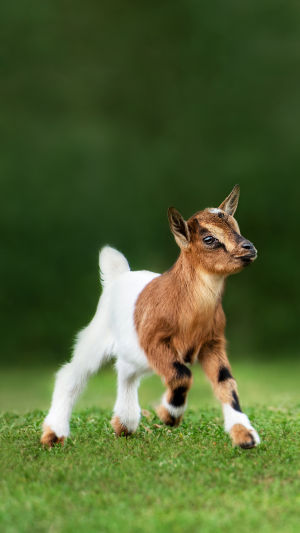On serene grasslands, fluffy companions leisurely graze, their woolly coats resembling clouds on the emerald field. At first glance, these plump and endearing creatures appear identical, but a closer look reveals two distinct species within the flock: goats and sheep.
Although they both belong to the sheep family, they are two different species with many interesting differences and similarities.
1. Appearance Difference: When it comes to their coat colors, goats are like a vibrant canvas ranging from snowy whites to deep blacks and rich brown. Their hair, tough and wiry, resembles a rugged adventurer's mane while the sheep primarily have white wool, although black, brown, and other colors are also possible. And their wool, often curly and soft, resembles clouds in the sky.
2. Heat Sensitivity: Sheep have poor heat dissipation due to underdeveloped sweat glands and thick wool.
In summer, it's important to aid their cooling. Overheating can lead to disease susceptibility and lower fertility, making a hot and humid environment unfavorable for their health. Goats, in comparison, handle heat and humidity better and are more adaptable than sheep.
3. Preference for Dryness and Cleanliness: Both sheep and goats thrive in dry, clean environments.
Humid conditions increase the risk of parasitic diseases and hoof rot. For areas with high humidity, consider using elevated bedding to prevent these issues. Regularly changing drinking water and employing pasture rotation can also mitigate disease risks.
4. Flocking Behavior: Sheep and goats naturally gravitate towards forming large groups, which provides them with a sense of security. Sheep, especially, have a strong instinct to stick together, even when weak or after lambing. Breeds may vary in their tendency to flock, but this behavior is generally prominent.
Notably, goats also display strong flocking instincts, often following a lead goat. Monitoring and managing the lead sheep or goat can efficiently control the movement of the entire flock and reduce the effort needed from the grazier.
Understanding these distinct characteristics is conducive to effective sheep and goat management:
1. Optimal Care: Tailoring care practices to suit the specific needs of each species ensures their well-being and productivity when it is essential to provide adequate shade and ventilation during hot periods and to maintain clean and dry living conditions.
2. Effective Management: Implementing management strategies that capitalize on flocking behavior streamlines herd control. Monitoring the lead animal in the flock enables efficient herd movement and alleviates the grazer's workload.
Goats and sheep, while both categorized as "sheep", exhibit distinct characteristics and values. Recognizing their differences not only aids in distinguishing between them in our daily lives but also fosters a deeper appreciation and affection for these charming animal companions.





